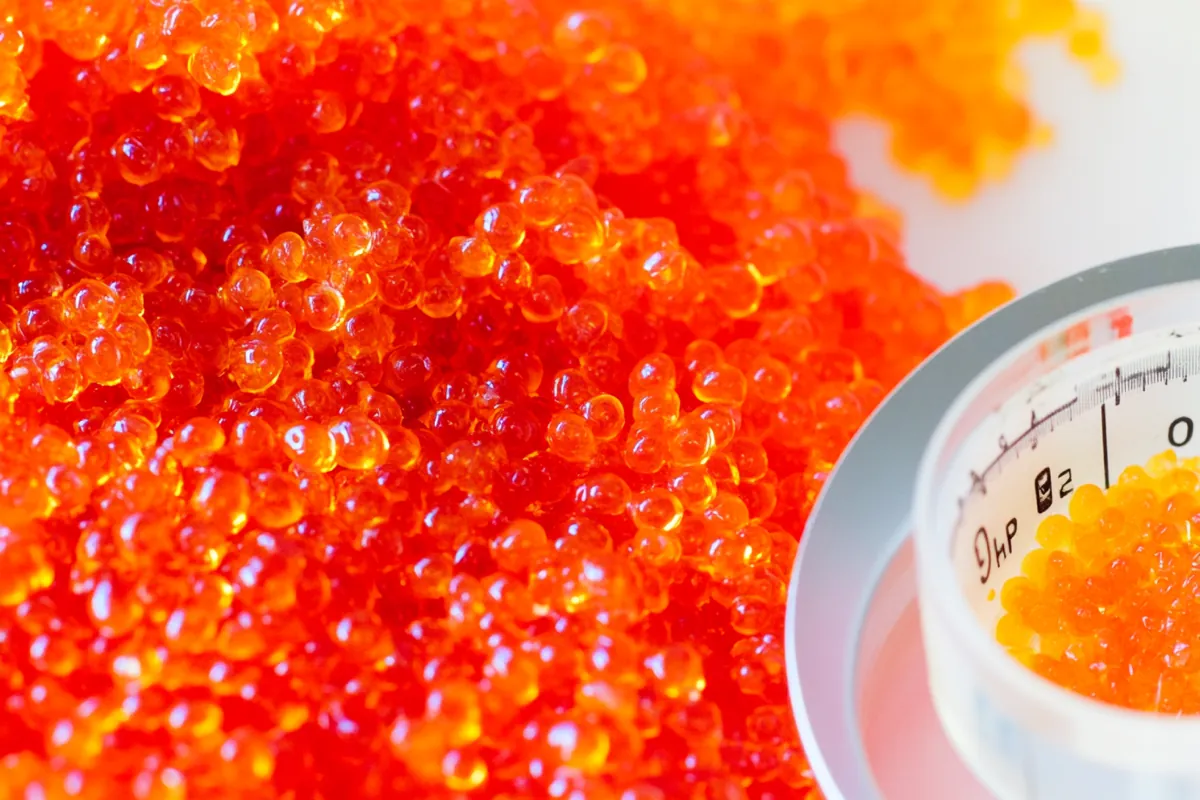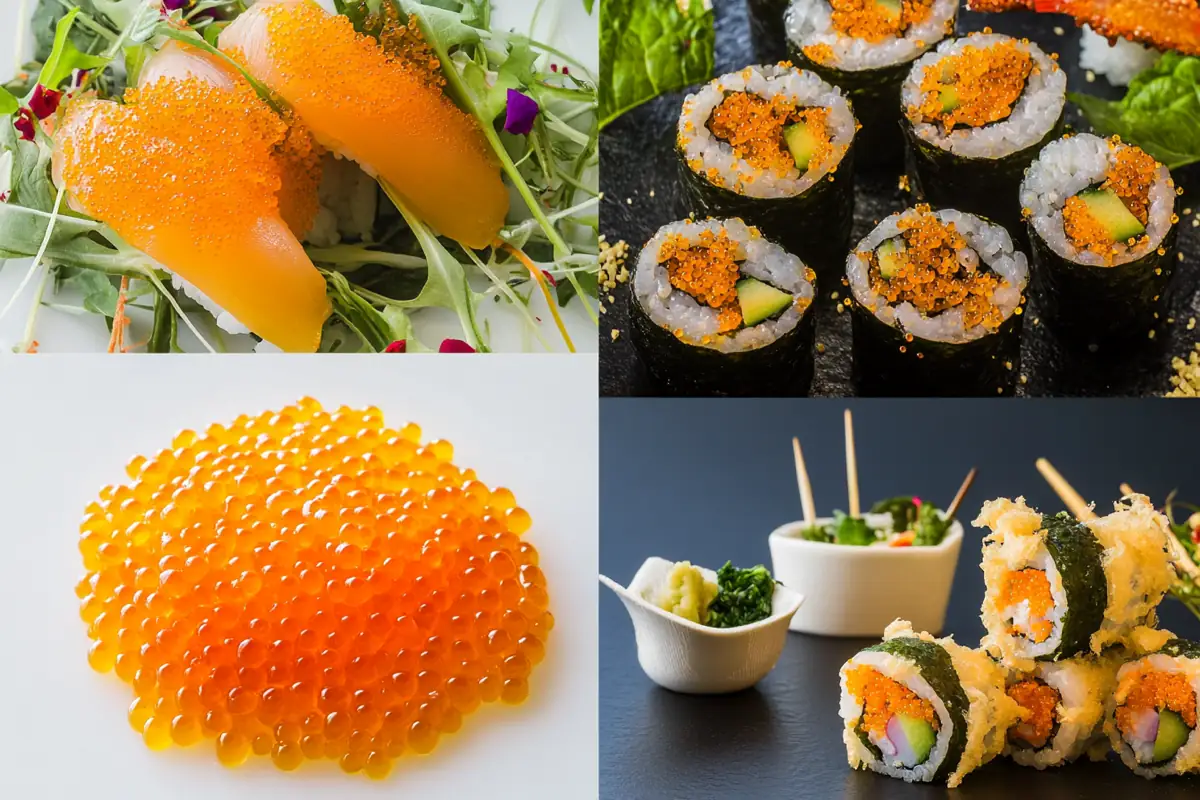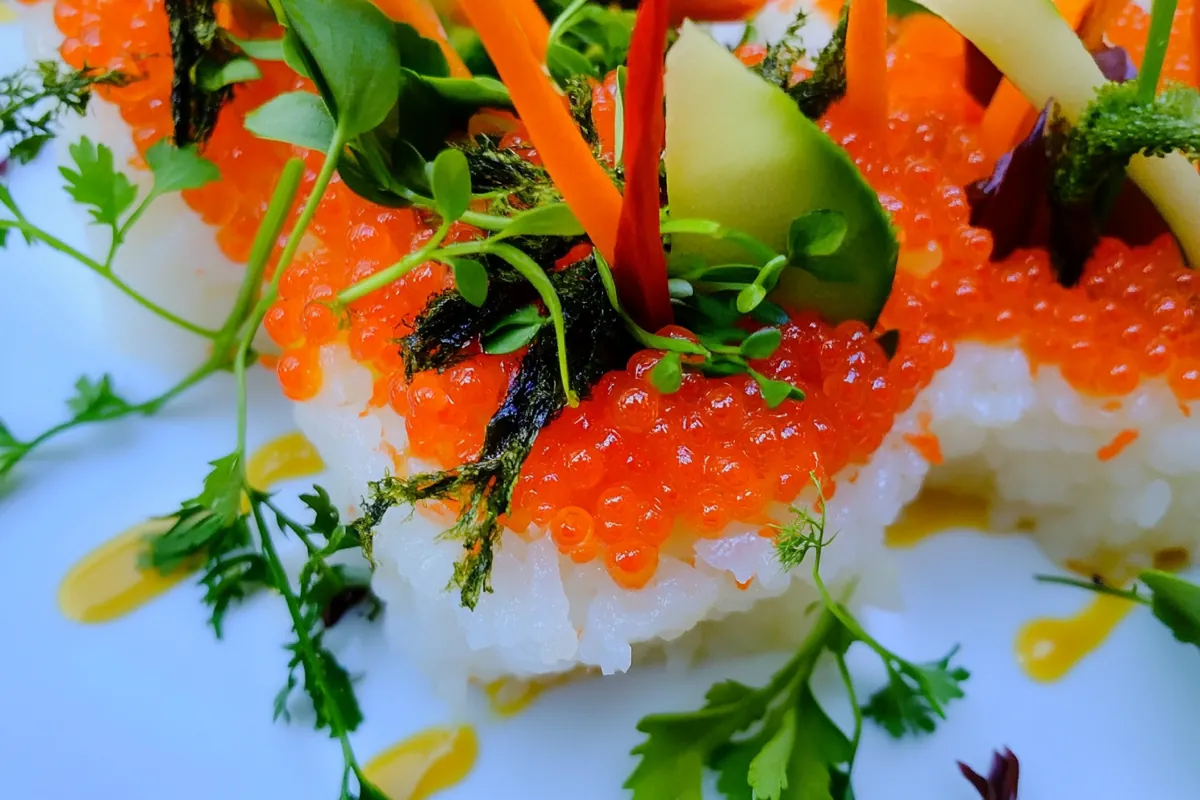When it comes to seafood delicacies, smelt roe stands out as both a flavorful and nutritious option. This tiny fish egg is not only delicious but also packed with essential nutrients. In this guide, we will explore everything you need to know about smelt roe nutrition, its health benefits, and how it compares to other popular varieties like masago and capelin roe. By the end, you will understand why incorporating smelt roe into your diet can be a tasty and healthful choice.
Table of Contents
Introduction to Smelt Roe Nutrition
Smelt roe, derived from the smelt fish, offers a unique taste and texture that enhances a variety of dishes. Often used in sushi and as a garnish, its vibrant color makes it a visually appealing addition to meals. Not only does it taste great, but it also boasts a rich nutritional profile.
What is Smelt Roe?
Smelt roe refers to the eggs harvested from the smelt fish, primarily found in cold waters. These tiny, golden-orange pearls are not just a culinary delight; they are also a source of essential nutrients. They contain proteins, vitamins, and fatty acids that contribute to overall health. Additionally, smelt roe is often considered a delicacy in various cuisines, especially in Japanese dishes.
Overview of Capelin Roe
Similar to smelt roe, capelin roe comes from the capelin fish, which is also prevalent in colder waters. Capelin roe is often used in sushi and is known for its slightly larger size compared to smelt roe. The taste profile of capelin roe is similar, yet it has its distinct flavor nuances. Both types of roe are rich in nutrients, making them sought-after ingredients in many culinary traditions.
Differences between Smelt Roe and Capelin Roe
While both smelt and capelin roe offer similar nutritional benefits, there are key differences.
- Size and Texture: Smelt roe tends to be smaller and slightly firmer than capelin roe.
- Flavor: Smelt roe has a milder taste, while capelin roe is known for a more pronounced flavor.
- Culinary Uses: Smelt roe is often used as a garnish, while capelin roe is more commonly used in sushi rolls and as a filling.
Understanding these differences can help you choose the right type of roe for your culinary needs.
Nutritional Profile of Smelt Roe
Smelt roe is a powerhouse of nutrition. It is low in calories yet high in essential nutrients.
Key Nutrients in Smelt Roe
A typical serving of smelt roe provides a substantial amount of protein, healthy fats, and vitamins. Here are some key nutrients:
- Protein: Essential for building and repairing tissues.
- Omega-3 Fatty Acids: Important for heart and brain health.
- Vitamins: Includes vitamins A, D, and B12, crucial for various body functions.
These nutrients make smelt roe an excellent addition to a balanced diet.
Vitamins and Minerals in Smelt Roe
Smelt roe is rich in essential vitamins and minerals:
- Vitamin A: Supports eye health and immune function.
- Vitamin D: Important for bone health and calcium absorption.
- Vitamin B12: Vital for nerve function and the formation of red blood cells.
- Iron: Essential for transporting oxygen in the blood.
These nutrients contribute significantly to overall well-being and health.
Omega-3 Fatty Acids in Smelt Roe
One of the standout features of smelt roe is its high content of omega-3 fatty acids. These healthy fats are known for their ability to reduce inflammation and support heart health. Regular consumption of omega-3s is linked to lower risks of cardiovascular diseases and improved cognitive function.
Comparison with Masago Nutrition
When comparing smelt roe to masago, which comes from capelin fish, both offer impressive nutritional benefits. However, smelt roe typically has higher omega-3 fatty acid content, making it a slightly healthier option. Masago, while nutritious, may not contain as many essential fatty acids, giving smelt roe an edge in this aspect.

Caloric Content of Smelt Roe
When considering smelt roe nutrition, understanding its caloric content is essential. Smelt roe is low in calories, making it a great option for those looking to enjoy a flavorful ingredient without adding excessive calories to their diet.
Understanding Masago Calories
Masago, the roe derived from capelin, has a similar caloric profile to smelt roe. A typical serving of masago contains around 40-50 calories. However, smelt roe generally has slightly fewer calories, usually ranging from 30 to 40 calories per serving. This low-calorie count makes both types of roe appealing for health-conscious consumers.
Comparison of Smelt Roe and Masago Calories
While both smelt roe and masago are low in calories, nuances in their caloric content might influence your choice. Here’s a quick comparison:
- Smelt Roe: Approximately 30-40 calories per tablespoon.
- Masago: Approximately 40-50 calories per tablespoon.
This slight difference means you can enjoy a serving of smelt roe with even fewer calories, making it a fantastic option for light meals or snacks.
Portion Sizes: How Much Smelt Roe to Eat
When incorporating smelt roe into your diet, it’s essential to understand portion sizes. A standard serving size is about one tablespoon, which provides a satisfying flavor without overloading on calories. Here are some suggestions for enjoying smelt roe:
- Sushi Rolls: Use one tablespoon as a filling or topping.
- Salads: Sprinkle a tablespoon on top for added flavor.
- Appetizers: Serve with crackers or vegetables for a light snack.
By controlling portion sizes, you can enjoy the unique taste of smelt roe while keeping your calorie intake in check.
Health Benefits of Consuming Smelt Roe
Beyond its nutritional profile, smelt roe offers numerous health benefits. Regular consumption can contribute positively to various aspects of health.
Cardiovascular Health Benefits
One of the most significant benefits of smelt roe is its positive impact on cardiovascular health. Rich in omega-3 fatty acids, it helps maintain healthy cholesterol levels. Additionally, these healthy fats can lower blood pressure and reduce the risk of heart disease. Including smelt roe in your diet can thus support overall heart health.
Benefits for Brain Health
The omega-3 fatty acids found in smelt roe are also crucial for brain health. Studies suggest that these fatty acids can enhance cognitive function and may even help reduce the risk of neurodegenerative diseases. By incorporating smelt roe into your meals, you’re not just feeding your body but also nurturing your mind.
Role of Omega-3 Fatty Acids in Health
The omega-3 fatty acids in smelt roe play vital roles in overall health. They are known for:
- Reducing Inflammation: Helping alleviate conditions like arthritis.
- Improving Mood: Linked to reduced symptoms of depression.
- Supporting Eye Health: Beneficial for vision and eye function.
These powerful benefits make smelt roe a fantastic addition to a healthy diet.
Antioxidant Properties of Smelt Roe
In addition to omega-3s, smelt roe contains antioxidants that help combat oxidative stress in the body. These compounds can protect cells from damage caused by free radicals, contributing to overall health. Including antioxidant-rich foods like smelt roe can support your body’s defense system and promote longevity.
Incorporating smelt roe into your diet not only enhances the flavor of your meals but also provides a wealth of health benefits. As you explore the world of seafood, consider adding smelt roe to your culinary repertoire for a nutritious boost.

Potential Risks and Considerations
While smelt roe is nutritious, it’s important to be aware of potential risks. Understanding these factors can help you enjoy it safely and healthily.
Allergies and Sensitivities
One of the primary concerns with smelt roe is the potential for allergic reactions. Some individuals may be allergic to fish or shellfish, which can lead to serious reactions. Symptoms may include:
- Hives or skin rashes
- Difficulty breathing
- Swelling of the face, lips, or throat
If you have a known allergy to fish or roe, it is crucial to avoid consuming smelt roe. Always consult a healthcare professional if you are unsure.
Heavy Metal Concerns in Fish Roe
Another consideration when consuming roes, including smelt roe, is the potential for heavy metal contamination. Fish can accumulate toxins like mercury in their bodies, which can be harmful if ingested in large amounts.
- Mercury Levels: While smelt roe usually has lower mercury levels compared to larger fish, it is still wise to monitor your intake.
- Safe Consumption: It is recommended to limit your consumption of fish roe to a few servings per week to reduce exposure to heavy metals.
By being mindful of these factors, you can safely enjoy the benefits of smelt roe.
Safe Consumption Levels of Smelt Roe
To enjoy smelt roe while minimizing risk, consider the following guidelines:
- Moderation is Key: Aim for 1-2 servings per week.
- Know Your Source: Purchase smelt roe from reputable suppliers to reduce the risk of contamination.
- Stay Informed: Be aware of local advisories related to fish consumption, especially if you are sourcing locally.
By following these guidelines, you can enjoy smelt roe as part of a balanced diet without compromising your health.
Culinary Uses of Smelt Roe
Smelt roe is not only nutritious but also incredibly versatile in the kitchen. Whether you’re preparing sushi, salads, or appetizers, smelt roe can elevate your dishes with its unique flavor and texture.
How to Prepare Smelt Roe
Preparing smelt roe is straightforward and requires minimal effort. Here are some tips:
- Rinse: Lightly rinse the roe under cold water to remove any excess salt.
- Drain: Place it in a fine mesh strainer to let any excess water drip off.
- Serve: Use it fresh or incorporate it into your favorite recipes.
Smelt roe can be enjoyed raw, making it an excellent addition to sushi or as a topping for various dishes.
Incorporating Smelt Roe into Dishes
Smelt roe can enhance various dishes, providing not just flavor but also a nutritional boost. Here are some ways to use it:
- Sushi Rolls: Add a tablespoon of smelt roe to sushi rolls for a burst of flavor.
- Salads: Sprinkle over green salads for a crunchy texture and a pop of color.
- Toppings: Use as a topping for avocado toast or creamy dips.
With its bright color and unique taste, smelt roe can transform ordinary dishes into culinary delights.
Popular Recipes Featuring Smelt Roe
Here are a few popular recipes that highlight smelt roe:
- Smelt Roe Sushi: Combine sushi rice, nori, and vegetables with smelt roe for a delicious bite.
- Salad with Smelt Roe: Toss together mixed greens, cherry tomatoes, and a light vinaigrette, then top with smelt roe.
- Smelt Roe Canapés: Serve smelt roe on crackers with cream cheese and herbs for a tasty appetizer.
These recipes showcase the versatility of smelt roe, making it a delightful addition to your culinary repertoire.

Conclusion: The Value of Smelt Roe in Your Diet
Incorporating smelt roe into your diet can be a delicious and nutritious choice. With its low calorie count and rich nutritional profile, smelt roe offers numerous health benefits. From supporting heart health to enhancing brain function, the advantages of consuming this seafood delicacy are clear.
Summary of Nutritional Benefits
To summarize, smelt roe is a great source of:
- High-quality protein
- Omega-3 fatty acids
- Essential vitamins and minerals
These components make smelt roe an excellent addition to a balanced diet, whether enjoyed in sushi, salads, or as a topping for various dishes.
Final Thoughts on Smelt Roe Consumption
As you consider including smelt roe in your meals, remember to do so in moderation. Be aware of allergies and potential contaminants, and always source your roe from reputable suppliers. By following these guidelines, you can enjoy the unique flavors and health benefits of smelt roe safely.
Embrace the culinary versatility of smelt roe and explore its delicious possibilities in your kitchen. With this guide, you’re now equipped to make informed choices about incorporating this nutritious ingredient into your diet.
FAQ
As you explore smelt roe nutrition, you may have some questions about its health benefits and culinary uses. Here are some frequently asked questions that can provide clarity.
Is Smelt Roe Healthy?
Yes, smelt roe is considered healthy. It is low in calories and rich in essential nutrients, including omega-3 fatty acids, proteins, and various vitamins and minerals. These nutrients contribute to heart health, brain function, and overall well-being. However, it’s crucial to consume it in moderation due to potential allergens and heavy metal concerns.
Is Eating Roe Good for You?
Eating roe can be beneficial, as it provides high-quality protein and important nutrients. Varieties like smelt roe and masago are particularly rich in omega-3 fatty acids, which are known for their heart health benefits. Including roe in your diet can enhance your nutrient intake, but always be mindful of the source and quantity you consume.
What is the Nutritional Value of Smelts?
Smelts, the fish from which smelt roe is derived, are also nutritious. They are low in calories and high in protein, along with providing essential fatty acids. A typical serving of smelt (around 100 grams) offers about 20 grams of protein and is a good source of vitamins D and B12, contributing to a balanced diet.
What is the Difference between Smelt Roe and Caviar?
The primary difference between smelt roe and caviar lies in their origins. Caviar is made from the roe of sturgeon fish, while smelt roe comes from the smelt fish. Additionally, caviar is typically more expensive and considered a luxury food item, whereas smelt roe is more accessible and often used in a variety of dishes.




